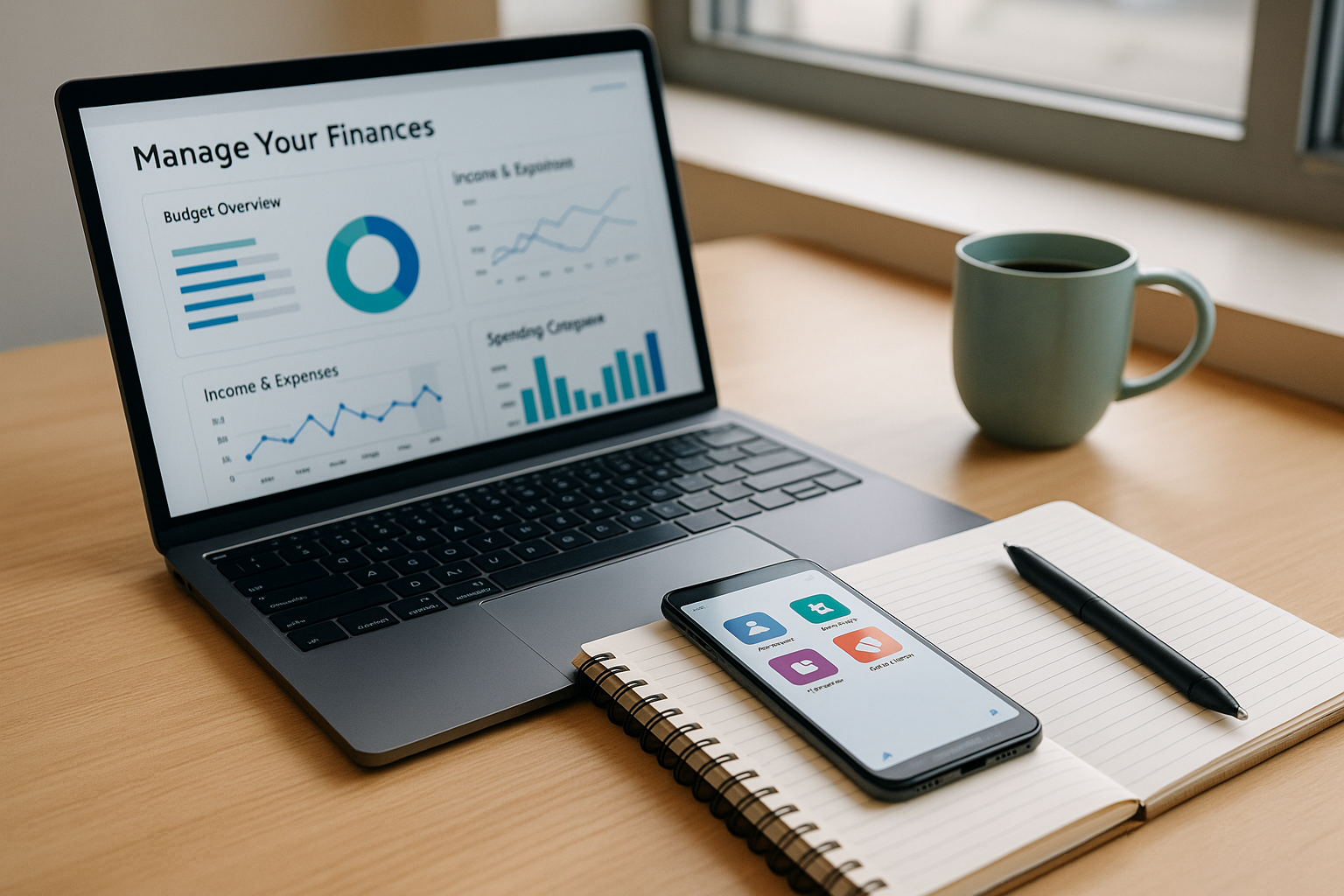Introduction
Managing your money in 2025 doesn’t have to feel like juggling flaming swords. With the rise of intuitive apps, automation, and AI-powered platforms, your finances can go from chaotic to completely under control. But with so many tools out there, it’s hard to know what actually helps and what adds noise. This guide breaks it all down, showing you exactly how digital tools can bring clarity, structure, and even peace of mind to your financial life.
1. Why Digital Tools Are Game-Changers
Paper budgets and notebooks still work—but let’s be honest, they’re hard to maintain. Digital tools make tracking and planning seamless by automating tasks, providing real-time data, and keeping everything in one place.
- Instant insights: See where your money goes in seconds.
- Automation: Set it once and let it run.
- Mobile convenience: Manage your money from anywhere.
They reduce mental load, increase accuracy, and—most importantly—build consistency.
2. Budgeting Apps That Keep You on Track
These tools help you build a spending plan and stick to it:
YNAB (You Need A Budget)
- Teaches proactive budgeting.
- Encourages assigning every dollar a job.
- Great for zero-based budgeting and planning ahead.
Monarch Money
- Combines tracking, budgeting, and goal-setting.
- Syncs all accounts in one dashboard.
- Ideal for couples and families.
EveryDollar
- Simple, fast, and user-friendly.
- Works best for people following the Dave Ramsey method.
Choose one that matches your mindset—visual, spreadsheet-style, or goal-focused.
3. Expense Trackers That Spot the Leaks
Even the best budget won’t work if you’re not tracking what actually happens. Expense trackers fill that gap.
PocketGuard
- Shows how much you can spend safely today.
- Breaks down spending into smart categories.
Spendee
- Lets you budget by wallet (e.g., home, vacation, cash).
- Useful for separating personal and business spending.
Goodbudget
- Envelope-style planning.
- Helps limit spending in each category through digital envelopes.
Tip: Set up daily or weekly notifications to stay aware without obsessing.
4. Savings and Investment Tools That Make It Easy
Saving and investing used to feel intimidating. Not anymore. These tools simplify everything—even if you’re starting small.
Chime or Varo (Banking apps with autosave features)
- Rounds up purchases and saves the difference.
- Moves fixed amounts to savings each payday.
Acorns
- Invests your spare change.
- Helps beginners start with low risk.
Wealthfront / Betterment
- Robo-advisors that automatically invest based on your goals and risk level.
- Set-it-and-forget-it wealth building.
Even $5 a week gets you started. Automate it and let compound interest do its thing.
5. Debt Management Tools That Keep You Focused
If you’re trying to pay down debt, these tools can make it less overwhelming.
Undebt.it
- Free tool to visualize debt payoff strategies.
- Supports both avalanche and snowball methods.
Tally
- App that manages and pays off credit card debt.
- Offers a line of credit to consolidate multiple cards.
Credit Karma
- Tracks your credit score.
- Alerts you to changes and offers suggestions for improvement.
Having a plan—and watching progress—makes debt feel manageable instead of monstrous.
6. All-in-One Platforms for Total Clarity
Sometimes, you just want everything in one place:
Mint (Legacy but still popular)
- Connects bank accounts, credit cards, and bills.
- Tracks spending, budgets, goals, and credit score.
Copilot (iOS)
- AI-powered budget and finance tracker.
- Clean, modern interface with predictive tools.
Empower (formerly Personal Capital)
- Best for those with investments.
- Combines budgeting with retirement planning and net worth tracking.
One dashboard to rule them all = less stress, more confidence.
7. How to Choose the Right Tools for You
Not every app is a fit for every person. Choose based on your lifestyle, habits, and goals.
- Prefer automation? Go with Chime or Acorns.
- Need control? Try YNAB or EveryDollar.
- Want simplicity? PocketGuard or Spendee.
- Tracking investments? Use Empower or Wealthfront.
Stick to 2–3 tools max. Too many apps = overwhelm. You want clarity, not digital clutter.
8. Build a Simple Digital Routine
Once you’ve picked your tools, set up a rhythm:
- Daily: Glance at balances, new expenses.
- Weekly: Review budget categories, make adjustments.
- Monthly: Check progress on savings/debt goals.
- Quarterly: Reassess big-picture financial plan.
Consistency > complexity. A 5-minute check-in can save you from costly mistakes.
Conclusion: Tech Isn’t the Solution, You Are
Digital tools won’t fix your finances on their own. But when used right, they become powerful allies. They bring structure to your spending, simplify your goals, and help you track your wins. Whether you’re saving for a rainy day or paying down debt, tech can make the journey smoother.
Start with just one tool. Give it a week. Then add another if needed. You don’t need to be perfect—just more organized than you were yesterday.
Take back control of your money, one app at a time.
